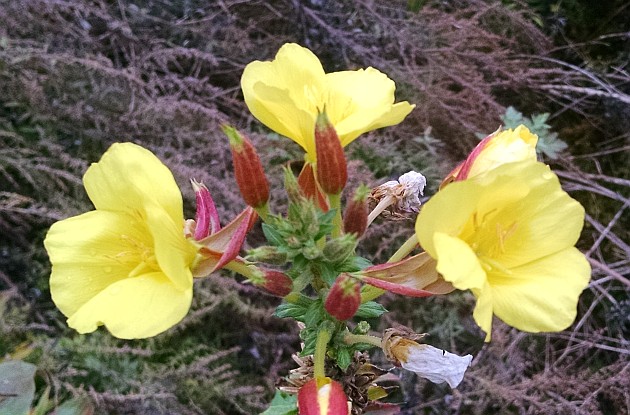
This common evening primrose (Oenothera biennis) was blooming on Wednesday, November 9 along the Nine Mile Run Trail in Frick Park.
Last night’s low of 30oF produced a light frost. I wonder if these flowers are still there.
(photo by Kate St. John)

This common evening primrose (Oenothera biennis) was blooming on Wednesday, November 9 along the Nine Mile Run Trail in Frick Park.
Last night’s low of 30oF produced a light frost. I wonder if these flowers are still there.
(photo by Kate St. John)
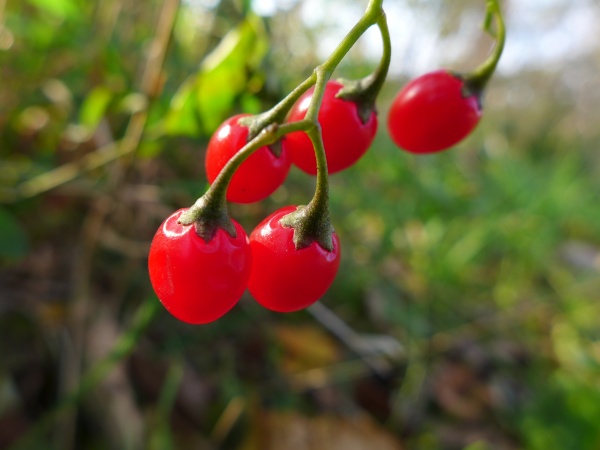
Roadsides are waste places where the junk plants grow but even the weeds produce fruit and seeds. Here’s what I found yesterday on a walk in my neighborhood.
The fruits of bittersweet nightshade (Solanum dulcamara) look like tiny tomatoes, above, or small jalapeño peppers … but don’t eat them!
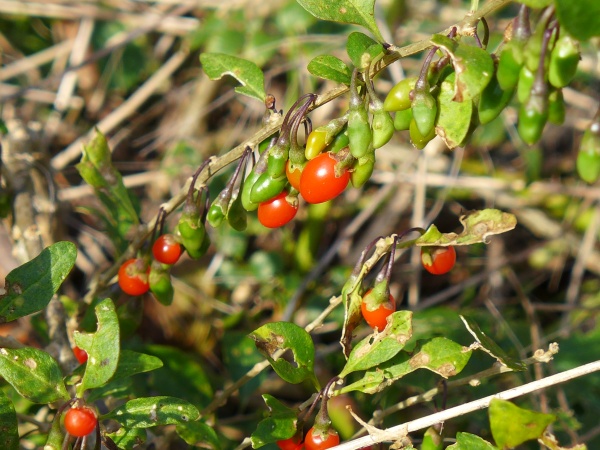
A close look at burdock reveals the tiny hooks that inspired velcro.
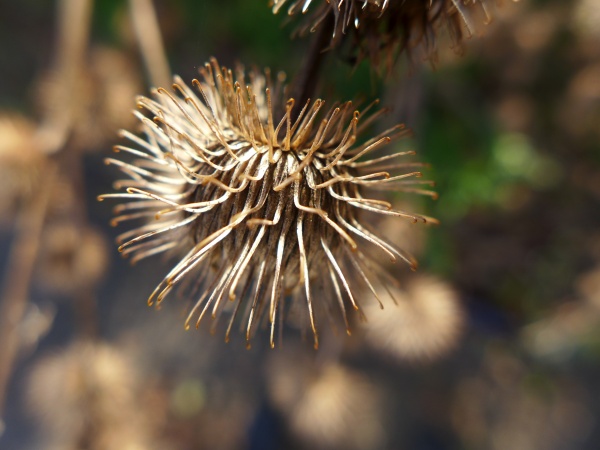
Curly dock (Rumex crispus) shows off its spike of dark brown seeds encased in the calyx of the flowers that produced them. Wikipedia says this flange allows the seeds to float.
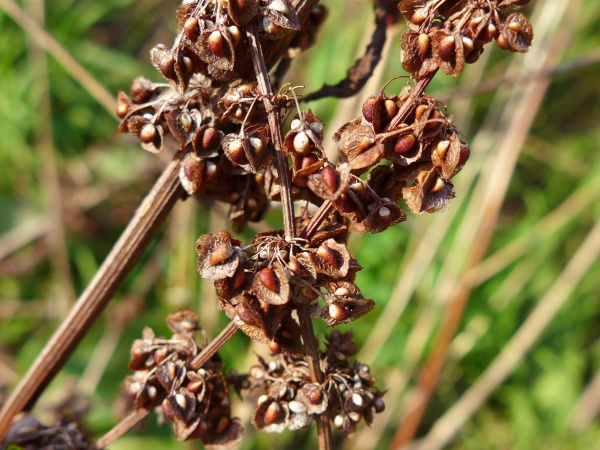
And when the wind blows these white snakeroot seeds (Ageratina altissima) will leave the mother plant.
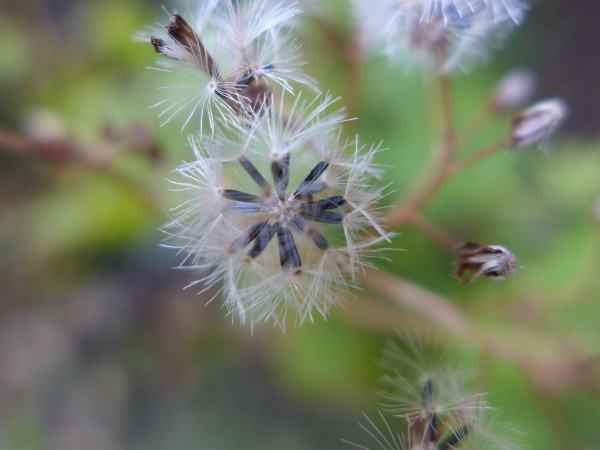
Take a walk around the edges to see roadside fruits and seeds.
(photos by Kate St. John)
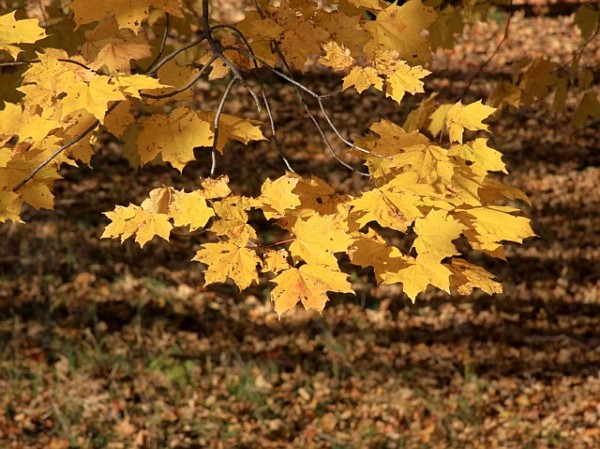
15 October 2016: Autumn is here though the temperature may fool you. After near-frost last Thursday we’ll reach 81oF next week.
Despite the fluctuating temperatures, plants and animals are getting ready for winter. What will we see outdoors in the weeks ahead? Here’s a list from Chuck Tague’s phenology for the month of October.
For more of Chuck Tague’s beautiful photos and his description of October’s wonders see his 2011 blog at: Asters, Wooly Bears and Sweaters: a Phenological perspective for October
(photo by Chuck Tague)
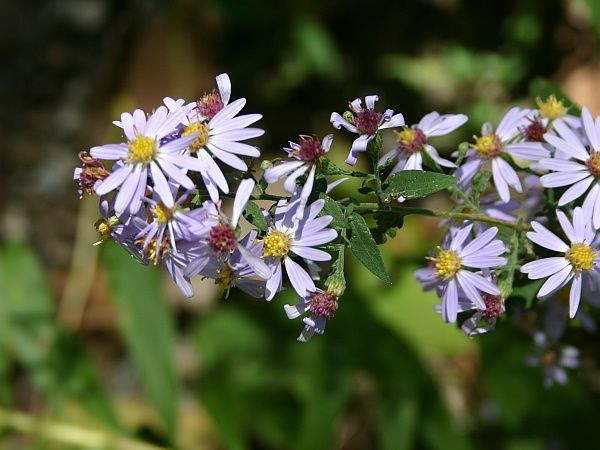
We’re halfway through September and it’s starting to feel like fall. Broad-winged hawks are migrating through Pennsylvania and some of you haven’t seen a hummingbird for a while.
What can we expect to see outdoors in the next six weeks?
On Throw Back Thursday, here’s a list of what’s coming up …

Here’s a tall woodland plant that’s easy to overlook because its flowers aren’t big and beautiful.
Horse balm (Collinsonia canadensis) is a perennial mint that grows 1.75 to 5 feet tall in deep woods. Even in the middle of its blooming cycle it looks ragged with flowers in every stage of development from bud to bloom, from fade to seed.

At very close range the flowers are fancy tubes with lips and protruding stamens (click here to see). You’ll also notice that the plant smells like cheap lemon scent, giving it the alternate name cintronella horse balm.
The name “balm” comes from its medicinal properties described at eNature: “Tea can be brewed from the leaves, and the rhizome was formerly used as a diuretic, tonic, and astringent.”
But why is it horse balm?
I haven’t found horses mentioned anywhere in the literature about this plant.
(photos by Kate St. John)
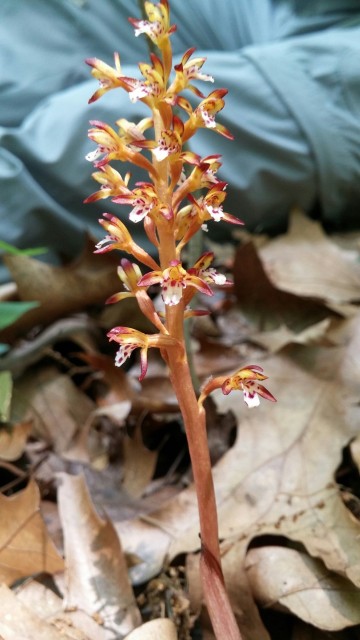
Now blooming in western Pennsylvania, Corallrhiza maculata is an orchid with many common names:
Spotted coralroot, Speckled coral root, Summer coralroot, Large coralroot, Many-flowered coralroot, and Western coralroot.
The names describe the plant:
You’ll notice that none of the names include a color. That’s because this leafless plant can be brown, purplish, reddish or yellow. The flower lip is always white but the yellowish plants have no spots.
Wildflowers Of Pennsylvania by Mary Joy Haywood and Phyllis Testal Monk says, “This plant, which goes dormant for years, grows in shady deciduous or coniferous forests, and is found throughout Pennsylvania.”
But finding it is difficult. Like the other coralroots it matches its habitat and to find it you have to go out in July’s heat.
Dianne and Bob Machesney found this one on a very hot day in Butler County.
(photo by Dianne Machesney)

This unusual flower with a swollen calyx is blooming now in western Pennsylvania. Though the plant stands two feet tall its bladder-like flowers weigh down the branches when it’s in full bloom.
Bladder campion (Silene vulgaris) is a member of the Pink family (Caryophyllaceae) native to Eurasia. It prefers to grow in waste places or sandy soil and is found as far north as Greenland and Alaska. Some people call it a weed.
Why is it here? Perhaps because its leaves and young shoots are eaten in some Mediterranean dishes. Or because it’s pretty.
I found this one blooming by the side of the road at the Laurel Highlands Hiking Trail.
p.s. Sometimes the swollen calyx is pink as shown in this article from 2011 entitled Balloons.
(photo by Kate St. John)
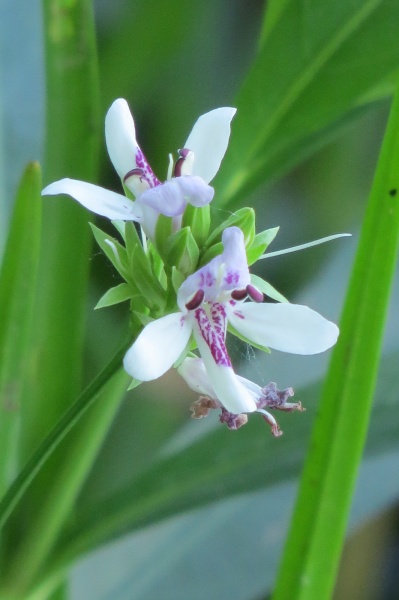
Here’s a plant you might not notice unless you walk to the water’s edge. Even then, it’s unremarkable from a distance because it looks like a clump of tall grass –> like this.
American water willow (Justicia americana) is the hardiest member of the tropical Justicia genus and the only one found in Pennsylvania. It likes to keep its feet wet so it typically grows on muddy shores or islands in creeks and rivers.
It’s always associated with water and its leaves resemble willows and so it got its name.
Water willow’s iris-like flowers are 1.5 inches across so they’re hard to see on a distant island. However, I’ve found them on shore at Duck Hollow, in Slippery Rock Creek at McConnell’s Mill State Park and in Chartiers Creek at Boyce-Mayview wetlands.
In this weekend’s hot weather, check out the water’s edge. Dianne Machesney found this one blooming at the Youghiogheny River in Ohiopyle.
(photo by Dianne Machesney)

Spotted wintergreen’s leaves can be found at any time of year but the plant only blooms from June to August.
The flowers hang like a chandelier from three branches on the main stem. Each flower resembles a lamp: five up swept white petals, paired anthers, and a bulbous green pistil (shown above).
You can tell the difference between spotted wintergreen (Chimaphila maculata) and its close relative Pipsissewa because spotted wintergreen’s leaves are pointed, whorled and distinctly striped on the midrib. For this reason it’s also called “striped wintergreen” — easy to remember when you see the leaves. Where are the spots?

Striped wintergreen is endangered in Canada, Illinois and Maine and exploitably vulnerable in New York. I found this one in Beaver County, Pennsylvania.
(photos by Kate St. John)
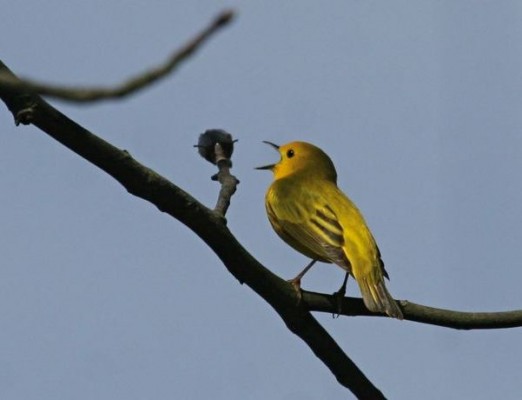
It happens every year. By late June, birds are singing a lot less than they did a month ago. By mid July most birds are silent.
Find out why they stop singing in this article: Becoming Silent.
(photo by Chuck Tague)